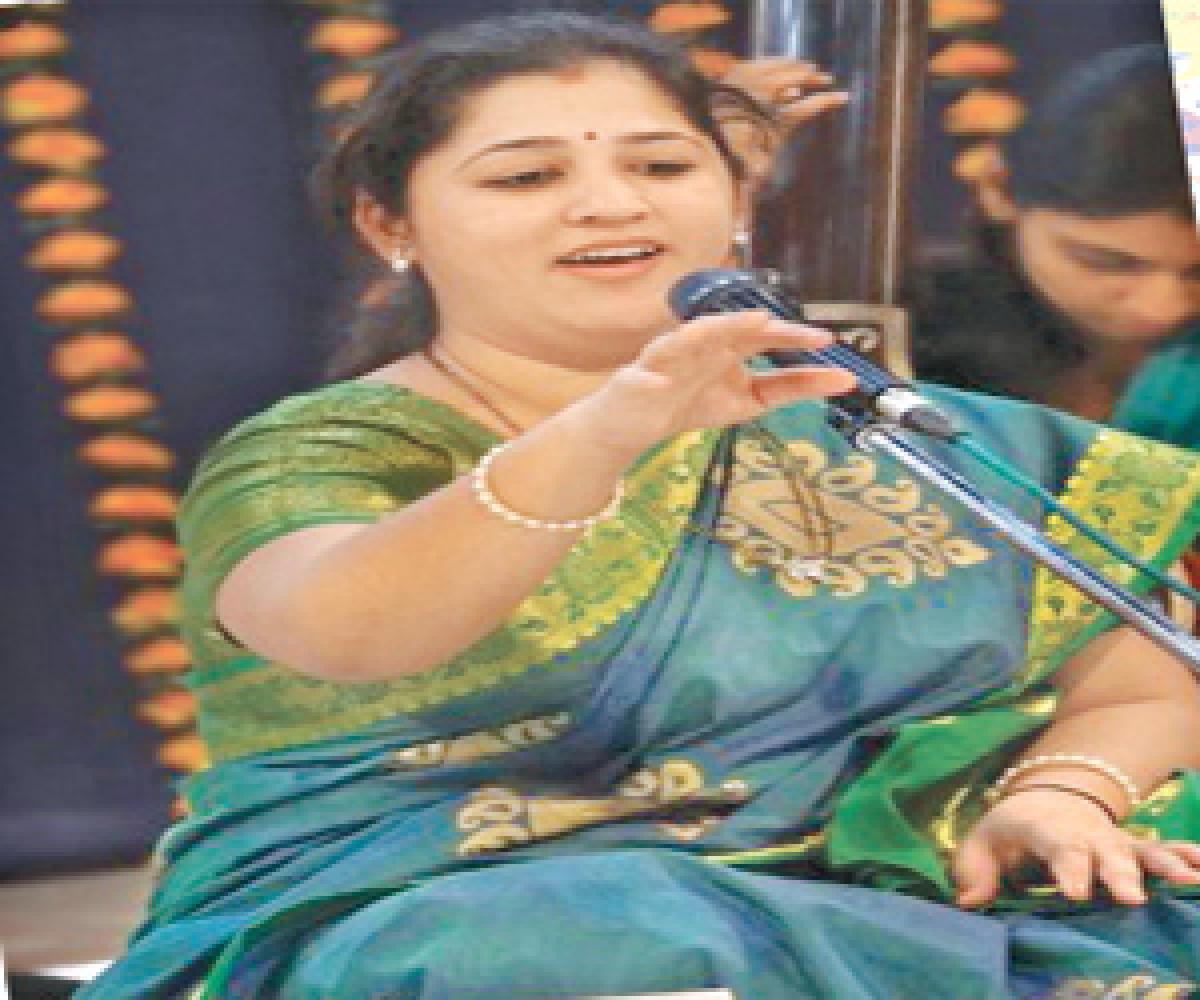Live
- Sharad Pawar makes a soul-stirring plea 'to regain the glory of progressive Maharashtra'
- Seven soldiers killed in attack on Pak military camp in Balochistan
- ICC announces 2025 Men’s Champions Trophy tour to begin in Islamabad
- Americans increasingly vote along class lines, not racial ones: Report
- Chandrababu's brother Rammurthy Naidu Passes Away in Hyderabad
- Russia restricts enriched uranium exports to US
- South African President orders immediate closure of tuck shops linked to food poisoning cases
- Study explains mechanisms behind food poisoning, gut infections
- Telangana residential school student commits suicide
- Cases of 'walking pneumonia' rise in US capital, joining national trend
Just In

The different hues of green stood out in perfect contrast to the blue cloud that filled the sky, while dew kissed leaves swayed to the rhythm of the gentle breeze. The sonorous voice that sang “Garjat... Baadalwaa” in Sur Malhar packed with power, melody and stunning simplicity held the audience in sway replicating indoors the uplifting vision of nature outside the glass wall of the banquet hall o
The different hues of green stood out in perfect contrast to the blue cloud that filled the sky, while dew kissed leaves swayed to the rhythm of the gentle breeze. The sonorous voice that sang “Garjat... Baadalwaa” in Sur Malhar packed with power, melody and stunning simplicity held the audience in sway replicating indoors the uplifting vision of nature outside the glass wall of the banquet hall of the Secunderabad Club, where Yashaswi Sirpotdar gave her first ever performance in Hyderabad as part of the third edition of the ‘In continuum’ series. “The audience were an absolute delight and were with me through the performance.
I could feel their involvement in every slight note and nuance and this connection made the whole experience very special,” says Yashaswi, who first took to the stage when she was barely two-and-a-half years old. Regarded as one of the top singers of Hindustani classical vocalists of the new generation Yashaswi Sirpotdar is a disciple of renowned guru Vidushi Padma Talwalkar and has imbibed from her – the special aspects of singing in the three main styles of the Gwalior, Kirana and Jaipur Gharanas.
The finer aspects and stylistic approach of each gharana enriched her singing experience and helped her evolve her own style of interpretation. “Variety is what makes our classical tradition so beautiful and creative,” she adds.
Growing up in Mumbai, in a musically inclined family, she was spotted playing the harmonium as a toddler by her grandmother Kalavathi Sathe, who was a trained musician herself. She noticed the little one’s skill at locating notes on the keyboard and started teaching her the harmonium. Since Yashaswi had a good voice too, she got onto the stage in a couple of months to play the harmonium.
“I sang “Jana gana mana” on stage and my folks tell me that I was so tiny that the audience couldn’t see me seated behind the harmonium,” she laughs. The harmonium was, however, set aside for the tanpura when she began her rigorous training under her guru at the age of five.
Her guru was a popular artiste by then and Yashaswi’s training included accompanying her on tours to various concerts, playing the tanpura and providing vocal support before the age of 10 - these tours were very useful as she observed the way her guru chose her ragas, explored, elaborated and unravelled them. Watching the exquisite mastery, style and technique of her guru on stage gave her immense confidence and made her “concert ready”.
Her first solo performance was when she was in Class IX. It was on the occasion of Guru Poornima when she sang “Miya ki Thodi” in front of her guru, Padma Tai and several other gurus, who graced the occasion. The happiness expressed by her and the thunderous applause of the audience remains etched in her memory to this day.
Attributing her success entirely to her guru Yashaswi Sirpotdar says that the relationship between a guru and a disciple is a unique one, with the guru-shishya parampara symbolising the best of our tradition. “Iss parampara par hamaari taalim nirbhar hai (Our learning is rooted in this tradition),” she says.
“Today everybody is attending music classes but are they learning in the true spirit of our tradition?,” she questions. Yashaswi Sirpotdar has given over 150 concerts all over the country and has received many awards including the prestigious Kesarbhai Kelkar scholarship given by the National Centre for Performing Arts and the Aditya Birla Kala Kiran award. She moved to Pune recently to be close to her guru from whom she continues to learn while teaching her own group of students.
“The more you teach the greater is your learning,” says this tradition loving artiste, who picks raag “Yaman” as her favourite, although she admits that each raga has its own intrinsic beauty. Music is not captured by any particular gharana and is something that takes you beyond definitions, labels and classifications according to her.
Talking about sadhana or the hours spent perfecting music, Yashaswi says that practising music is like meditation and an exercise devoid of ego. The more you delve into the depths of music, the greater the joy derived.
As she perfects every note she is intensely aware of the bond that develops between the artiste and the audience and the shared joy that envelopes them. “I feel so humbled when people come to me with tears of joy after a performance and I feel that there is no reward better than this.”
By: Aruna Ravikumar

© 2024 Hyderabad Media House Limited/The Hans India. All rights reserved. Powered by hocalwire.com







